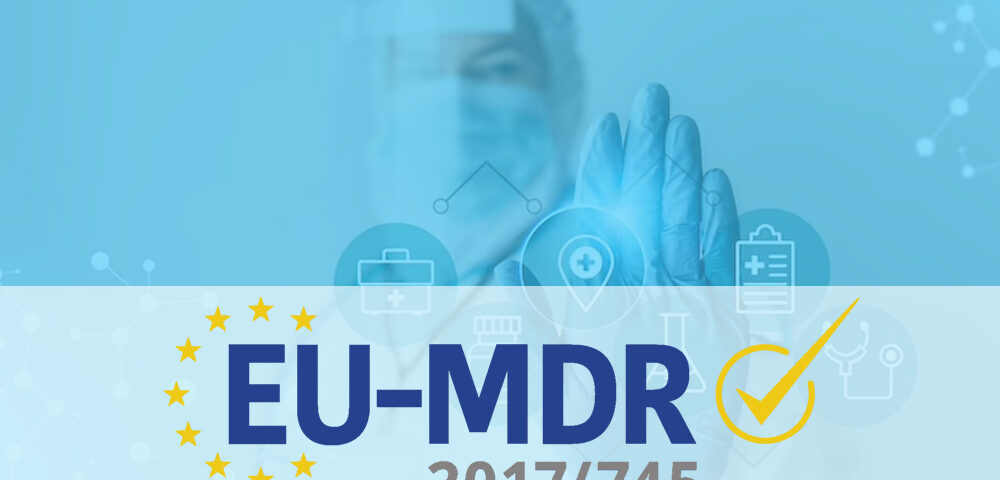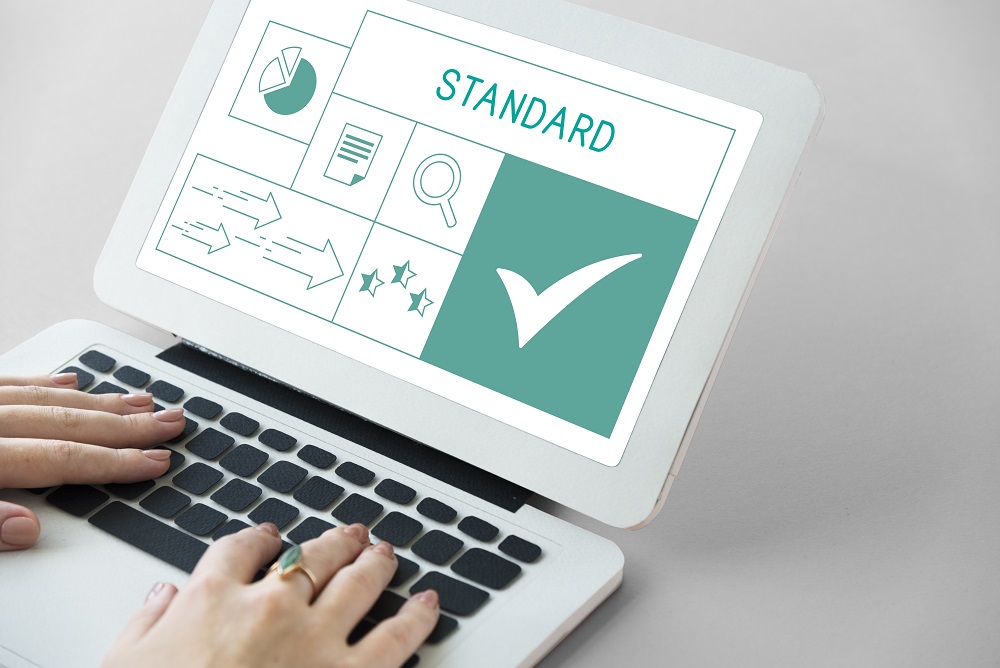
Documentation control in ISO 13485
4 July 2022
Software Test Engineer
30 September 2024Streamlining Medical Device Design and Development Under EU MDR 2017/745: A Comprehensive Guide
In a world where healthcare is evolving at an unprecedented pace, the design and development of medical devices demand meticulous attention to detail. The European Union’s Medical Device Regulation (EU MDR) 2017/745 has set new standards for the industry, requiring manufacturers to adhere to a systematic approach that ensures safety, efficacy, and compliance. In this guide, we’ll walk you through the steps of designing and developing a medical device under the EU MDR using the Waterfall process. We’ll also introduce you to SmartEye, an advanced eQMS software that can revolutionize your product lifecycle management.
Understanding the Waterfall Process for Medical Device Design and Development
The Waterfall process, a sequential design approach, is an ideal framework to ensure that every aspect of medical device design and development is meticulously executed. Here’s a step-by-step breakdown of the process:
- Requirement Analysis: Begin by identifying the specific needs of the medical device. Understand the user requirements, intended use, and performance criteria. SmartEye’s eQMS software facilitates this stage by providing an intuitive interface to record and manage user needs, ensuring that no critical aspects are overlooked.
- System Design: Create a comprehensive system design that outlines the architecture, components, and interfaces of the device. This stage involves mapping out the overall structure of the product. SmartEye’s eQMS offers a workflow for approvals, ensuring that design decisions are documented and authorized by relevant stakeholders.
- Software and Hardware Development: Develop the software and hardware components of the device based on the design specifications. SmartEye’s traceability matrix feature allows you to link user needs to design elements and tests, creating a transparent record of how the device meets specific requirements.
- Integration and Testing: Integrate the various components and conduct rigorous testing to verify the device’s functionality and performance. SmartEye’s eQMS enables you to manage and document testing processes, helping you identify and address any issues promptly.
- Verification and Validation: Ensure that the device meets the defined requirements and functions correctly in its intended environment. SmartEye’s risk management documents feature assists in identifying potential risks associated with the device’s use and aids in developing mitigation strategies.
- Regulatory Compliance and Certification: Prepare documentation for submission to a Notified Body, such as the traceability matrix, risk management documents, and verification/validation reports. SmartEye’s eQMS software ensures that all essential documentation is organized, up-to-date, and readily available for regulatory audits.
- Production and Post-Market Surveillance: Once certified, proceed with manufacturing the device and monitor its performance in the market. SmartEye’s eQMS system provides a central repository for managing post-market surveillance data and addressing any potential issues that arise.
SmartEye: Your Trusted Partner in Medical Device Lifecycle Management
While it’s possible to manage the design and development process manually, the complexity of modern medical devices necessitates a more sophisticated approach. SmartEye’s eQMS software streamlines the entire process, offering you an all-in-one solution for medical device design, development, and certification. With its traceability matrix, risk management documents, user needs tracking, and approval workflows, SmartEye ensures that every stage is efficiently managed and documented.
Requirement Analysis: Laying the Foundation for Successful Medical Device Design
In the realm of medical device design and development, understanding the unique needs and expectations of users is paramount. The initial step in the Waterfall process, requirement analysis, forms the cornerstone upon which the entire project is built. Let’s delve into the intricacies of this crucial phase and explore how SmartEye’s eQMS software simplifies the process.
Defining User Requirements
User requirements serve as the compass guiding your medical device’s development. At this stage, it’s essential to engage with a diverse group of stakeholders, including healthcare professionals, patients, and end-users. By conducting interviews, surveys, and usability studies, you can gain a comprehensive understanding of what your device needs to achieve.
SmartEye’s eQMS software aids in this endeavor by providing a user-friendly interface to record and manage user requirements. With the ability to categorize, prioritize, and link these requirements, you can ensure that every critical aspect is captured. This functionality eliminates the risk of missing important user needs during the design process.
Translating User Needs into Technical Specifications
Translating user requirements into clear and concise technical specifications is a delicate art. SmartEye’s eQMS system streamlines this transition by facilitating collaboration among multidisciplinary teams. With a centralized platform for communication and documentation, you can bridge the gap between user expectations and engineering realities.
Risk Management and Requirement Traceability
As regulatory bodies increasingly emphasize risk management, it’s imperative to identify potential hazards associated with the device’s use. SmartEye’s eQMS software integrates risk management documents into the requirement analysis process. This integration not only helps you identify potential risks but also ensures that risk mitigation strategies are incorporated into the design from the outset.
One of the standout features of SmartEye is its traceability matrix functionality. Through this matrix, you can establish clear links between user requirements, design elements, tests, and risk mitigation measures. This interconnected view provides a comprehensive perspective on how each aspect of the device addresses user needs and regulatory compliance, simplifying the eventual certification process.
Approval Workflow and Requirement Validation
In the intricate landscape of medical device development, collaboration and approvals play a pivotal role. SmartEye’s eQMS software streamlines the approval workflow by offering a structured and automated process. Relevant stakeholders can review, comment, and approve requirements, ensuring that design decisions are well-informed and endorsed.
Furthermore, SmartEye’s validation features enable you to ensure that the finalized requirements align with your device’s intended use and performance criteria. This validation process creates a robust foundation for subsequent stages, minimizing the risk of costly modifications down the line.
System Design: Blueprinting Medical Device Excellence with SmartEye’s eQMS
As the medical device landscape continues to evolve, the importance of a well-defined system design cannot be overstated. This phase in the Waterfall process lays the foundation for the device’s architecture, functionality, and overall performance. In this chapter, we’ll explore the intricacies of system design and discover how SmartEye’s eQMS software seamlessly supports this critical stage.
Architecting the Device: Balancing Form and Function
System design is where the abstract visions of your medical device start to take concrete shape. It involves structuring the device’s components, interfaces, and interactions to create a coherent whole. At this stage, cross-functional collaboration is key, bringing together engineers, designers, and domain experts to harmonize form and function.
SmartEye’s eQMS software fosters collaboration by providing a centralized platform for team communication. With secure document sharing, comment threads, and version control, SmartEye ensures that all stakeholders are on the same page, contributing their insights to the evolving design.
Mapping the Design Landscape: Documentation and Visualization
Clear documentation is the cornerstone of effective system design. SmartEye’s eQMS offers a structured approach to document your system design. By breaking down the design into modules, components, and interfaces, you create a comprehensive blueprint that ensures consistency and traceability.
Visualization also plays a crucial role in conveying the intricate details of your design. SmartEye’s eQMS supports visual aids, diagrams, and schematics, enhancing the clarity of your design documentation. This visual representation is invaluable in facilitating communication among team members and stakeholders.
Approval Workflows: Ensuring Design Integrity
In the complex world of medical device development, design decisions need to be reviewed and approved by relevant stakeholders. SmartEye’s eQMS software streamlines this process with automated approval workflows. Whether it’s a technical specification, a schematic diagram, or an interface definition, SmartEye ensures that design decisions are documented, reviewed, and endorsed by the right individuals.
Linking Design Elements and User Requirements
The beauty of SmartEye’s eQMS lies in its ability to establish strong links between design elements and user requirements. By cross-referencing design choices with the initial user needs, you ensure that every aspect of the device contributes to meeting the intended purpose. This feature not only enhances the device’s user-centricity but also simplifies the process of demonstrating compliance during regulatory audits.
Risk Management in System Design
Risk management is a thread that runs through every stage of medical device development. SmartEye’s eQMS integrates risk management into the system design phase, enabling you to identify potential hazards and implement mitigation strategies early in the process. By addressing risks during design, you lay the groundwork for a safer and more reliable device.
Software and Hardware Development: Crafting Medical Device Excellence with SmartEye’s eQMS
Welcome to the heart of medical device creation: the software and hardware development phase. This stage breathes life into your design blueprint, transforming concepts into functional realities. In this chapter, we’ll delve into the intricacies of software and hardware development, exploring how SmartEye’s eQMS software lends a helping hand throughout this critical journey.
Translating Design into Reality: The Development Phase
The software and hardware development phase is where your medical device truly takes shape. This is the stage where engineers bring your design specifications to life, writing code, assembling components, and creating the intricate mechanisms that power your device’s functionality.
SmartEye’s eQMS software offers a supportive ecosystem for development teams. With document version control, collaborative editing, and task management features, SmartEye ensures that the development process is both structured and transparent. The ability to track changes and manage tasks within the same platform simplifies coordination and minimizes the risk of errors.
Code Management and Collaboration: A Unified Approach
For software-based medical devices, effective code management and collaboration are paramount. SmartEye’s eQMS provides version-controlled repositories that enable developers to collaborate seamlessly on codebases. Whether your team is distributed across different locations or working on a complex codebase, SmartEye ensures that changes are tracked, conflicts are resolved, and a coherent codebase emerges.
Hardware Prototyping and Testing
The development phase often involves hardware prototyping, where the physical components of the device are assembled and tested. SmartEye’s eQMS software aids in this process by providing a platform to record and manage testing procedures. From initial hardware setups to fine-tuning components, SmartEye helps you organize your testing efforts and keep a comprehensive record of your progress.
Traceability Matrix: Linking Development to Requirements
SmartEye’s traceability matrix continues to be a guiding light during the software and hardware development phase. By linking your development efforts to the initial user requirements and design specifications, you create a clear record of how each development choice serves the device’s intended purpose. This feature proves invaluable during audits, demonstrating the alignment of your device’s functionality with user needs.
Integration and Compatibility Testing
As various components of your medical device come together, the integration and compatibility testing phase becomes crucial. SmartEye’s eQMS software facilitates the management of integration tests and compatibility checks, ensuring that all pieces work harmoniously. By documenting test procedures, results, and any issues encountered, SmartEye helps you identify and address potential bottlenecks early in the process.
Integration and Testing: Ensuring Medical Device Excellence with SmartEye’s eQMS
Welcome to a pivotal phase in the medical device design journey: integration and testing. As your device’s components come together, rigorous testing is essential to verify its functionality, performance, and safety. In this chapter, we’ll delve into the complexities of integration and testing, and discover how SmartEye’s eQMS software seamlessly supports this critical stage.
Integration: Harmonizing the Components
Integration is where the various pieces of your medical device come together to create a cohesive whole. Whether it’s software modules, hardware components, or external interfaces, integration ensures that everything functions harmoniously. At this stage, thorough testing is essential to identify any compatibility issues, ensuring that your device works seamlessly under real-world conditions.
The Role of SmartEye’s eQMS in Integration
SmartEye’s eQMS software serves as your ally in managing integration efforts. By providing a platform to record and manage integration procedures, SmartEye ensures that each step is documented and organized. This transparency not only enhances team collaboration but also aids in identifying any issues that may arise during integration.
Testing: The Crucial Assurance of Quality
Testing is the litmus test of your device’s performance and safety. Rigorous testing helps uncover bugs, glitches, and potential pitfalls that might otherwise go unnoticed. From functional tests to stress tests, every test adds a layer of assurance that your device will meet user needs and regulatory standards.
SmartEye’s eQMS for Comprehensive Testing Management
SmartEye’s eQMS software streamlines the testing process by providing a structured approach to test planning, execution, and documentation. With integrated workflows, teams can coordinate testing efforts efficiently, track test progress, and ensure that no critical aspect is overlooked. By documenting test results, issues, and resolutions within the same platform, SmartEye offers a comprehensive view of the testing landscape.
Verification and Validation: Ensuring Compliance
Verification and validation are integral components of the testing phase. Verification confirms that the device’s components meet the specified requirements, while validation ensures that the device meets its intended use in its real-world environment. SmartEye’s eQMS software assists in documenting both verification and validation activities, creating a robust foundation for regulatory compliance.
Traceability Matrix: The Link to User Needs
Once again, SmartEye’s traceability matrix shines as a guiding light. By linking tests to specific user needs, design elements, and requirements, you create a transparent record of how each test verifies the device’s functionality and safety. This interconnected view simplifies the process of demonstrating compliance during regulatory audits.
Verification and Validation: Ensuring Medical Device Excellence with SmartEye’s eQMS
Welcome to a critical juncture in your medical device design journey: the verification and validation phase. As you approach the finish line, these stages play a pivotal role in ensuring that your device meets user requirements, functions as intended, and adheres to regulatory standards. In this chapter, we’ll explore the intricacies of verification and validation, and uncover how SmartEye’s eQMS software seamlessly supports this essential stage.
Verification: Confirming Component Compliance
Verification involves meticulous scrutiny of individual components to ensure they meet the specified requirements. This phase serves as a checkpoint to ensure that each piece of your medical device aligns with the design specifications, effectively bridging the gap between design and implementation.
SmartEye’s eQMS: Your Verification Partner
SmartEye’s eQMS software offers a structured approach to verification. With its ability to link design elements to user requirements and specifications, SmartEye ensures that verification efforts are focused on ensuring that each component performs as intended. By documenting the results of verification tests within the eQMS, you create a comprehensive record that demonstrates compliance and quality.
Validation: Ensuring Real-World Suitability
Validation takes the process a step further by confirming that the entire medical device meets its intended use and functions effectively in real-world scenarios. It’s not just about checking components; it’s about verifying that the device as a whole fulfills its purpose safely and efficiently.
SmartEye’s eQMS: Your Validation Support
SmartEye’s eQMS software facilitates the validation process by providing tools to record and manage validation activities. By linking validation efforts to user needs, design elements, and test results, SmartEye ensures a holistic view of how the device aligns with its intended use. This interconnected perspective simplifies the task of demonstrating compliance to regulatory bodies.
Risk Management: A Continuous Thread
Throughout the verification and validation phases, risk management remains integral. SmartEye’s eQMS software continues to support risk management efforts by ensuring that potential risks associated with design choices, testing outcomes, and usage scenarios are considered. By embedding risk management into these stages, you build a stronger foundation for device safety and compliance.
Traceability Matrix: Your Compliance Roadmap
Once again, SmartEye’s traceability matrix takes center stage. By linking verification and validation efforts to user requirements, design elements, and testing outcomes, you create a compelling story of how your medical device fulfills its intended purpose. This traceability matrix serves as a roadmap during regulatory audits, demonstrating the meticulous journey you’ve undertaken to ensure your device’s excellence.
Regulatory Compliance and Certification: Navigating the Path with SmartEye’s eQMS
Welcome to the culminating phase of your medical device design journey: regulatory compliance and certification. As you prepare to bring your device to market, adherence to regulatory standards and obtaining necessary certifications become paramount. In this chapter, we’ll delve into the complexities of regulatory compliance and certification, exploring how SmartEye’s eQMS software expertly guides you through this final stretch.
Understanding Regulatory Compliance
Regulatory compliance ensures that your medical device meets the standards and requirements set by regulatory authorities. In the realm of medical devices, such as those falling under EU MDR 2017/745, compliance is non-negotiable. It demonstrates that your device is safe, effective, and suitable for its intended use.
SmartEye’s eQMS and Regulatory Compliance
SmartEye’s eQMS software becomes your steadfast companion in ensuring regulatory compliance. By centralizing documentation, providing version control, and facilitating collaboration, SmartEye ensures that every aspect of your device’s development is meticulously documented and easily accessible. This transparency is crucial when presenting your device for regulatory assessment.
Preparing for Certification: A Thorough Approach
Certification is the seal of approval that your medical device complies with regulatory requirements. It involves submitting comprehensive documentation, test results, and risk assessments to a regulatory authority or notified body for evaluation. This process verifies that your device meets the necessary standards for safety, efficacy, and quality.
SmartEye’s eQMS: Your Certification Partner
SmartEye’s eQMS software streamlines the certification process by providing a well-organized repository of all relevant documentation. From user requirements and design specifications to risk management documents and verification/validation reports, SmartEye ensures that your submission is comprehensive and compelling. This documentation not only simplifies the certification process but also demonstrates your commitment to transparency and quality.
Demonstrating Traceability: The Key to Approval
During the certification process, the ability to demonstrate the traceability of your device’s development journey is invaluable. SmartEye’s traceability matrix plays a pivotal role in this endeavor. By linking user requirements, design elements, testing outcomes, and risk mitigation strategies, you create a clear narrative of your device’s development and compliance efforts. This traceability matrix becomes a powerful tool when presenting your case to regulatory authorities.
Global Relevance: Beyond EU MDR
The benefits of SmartEye’s eQMS software extend beyond EU MDR compliance. Whether you’re seeking FDA approval in the United States or adhering to regulations in other countries, SmartEye’s comprehensive documentation and streamlined workflows remain consistent. This versatility positions you for success in various markets.
Production and Post-Market Surveillance: Sustaining Excellence with SmartEye’s eQMS
Congratulations! Your medical device has successfully navigated the intricate journey of design, development, regulatory compliance, and certification. However, the journey doesn’t end here. The phases of production and post-market surveillance are equally vital to ensuring ongoing excellence. In this chapter, we’ll explore how SmartEye’s eQMS software continues to be your partner in maintaining device quality and meeting user needs.
Ensuring Quality Production
The production phase involves manufacturing your medical device at scale. Ensuring that every unit meets the same high standards as the prototypes requires stringent quality control and documentation. Variations in manufacturing processes, materials, and assembly procedures can all impact the device’s performance and safety.
SmartEye’s eQMS: Your Production Assurance
SmartEye’s eQMS software extends its support to the production phase by providing a platform to manage and document production processes. By tracking manufacturing procedures, materials, and quality checks, SmartEye ensures that each device rolling off the assembly line adheres to the same rigorous standards established during development.
Post-Market Surveillance: Monitoring Device Performance
Even after your device enters the market, the journey continues. Post-market surveillance involves monitoring device performance, collecting feedback from users, and identifying any potential issues that may arise in real-world usage. This ongoing monitoring ensures that your device remains safe and effective over time.
SmartEye’s eQMS: Your Surveillance Partner
SmartEye’s eQMS software supports post-market surveillance by providing tools to collect and manage user feedback, track device performance, and identify trends. By centralizing post-market data within the eQMS, you can proactively address any issues that arise and make informed decisions for continuous improvement.
Adapting to Changes: Change Management
In the dynamic world of medical device development, change is inevitable. Whether it’s an update to the device’s software, a modification in manufacturing processes, or improvements based on user feedback, change management ensures that modifications are well-documented, assessed for their impact, and implemented seamlessly.
SmartEye’s eQMS: Managing Change Effectively
SmartEye’s eQMS software streamlines change management by providing a platform to document and track modifications. By analyzing the potential impact of changes on device performance, safety, and compliance, SmartEye ensures that modifications are implemented smoothly while maintaining device quality.
Conclusion: Navigating EU MDR with SmartEye’s eQMS
Designing and developing a medical device under EU MDR 2017/745 demands a systematic approach to meet stringent requirements. The Waterfall process, when coupled with SmartEye’s eQMS software, empowers manufacturers to seamlessly manage the entire product lifecycle while maintaining compliance with regulations. Whether you’re seeking EU MDR certification or FDA approval, SmartEye is your ideal companion in navigating the intricate journey of medical device design and development.
Ready to see SmartEye in action? Request a demo today and discover how it can revolutionize your approach to medical device lifecycle management. Contact us to explore a world where innovation meets compliance seamlessly.*


